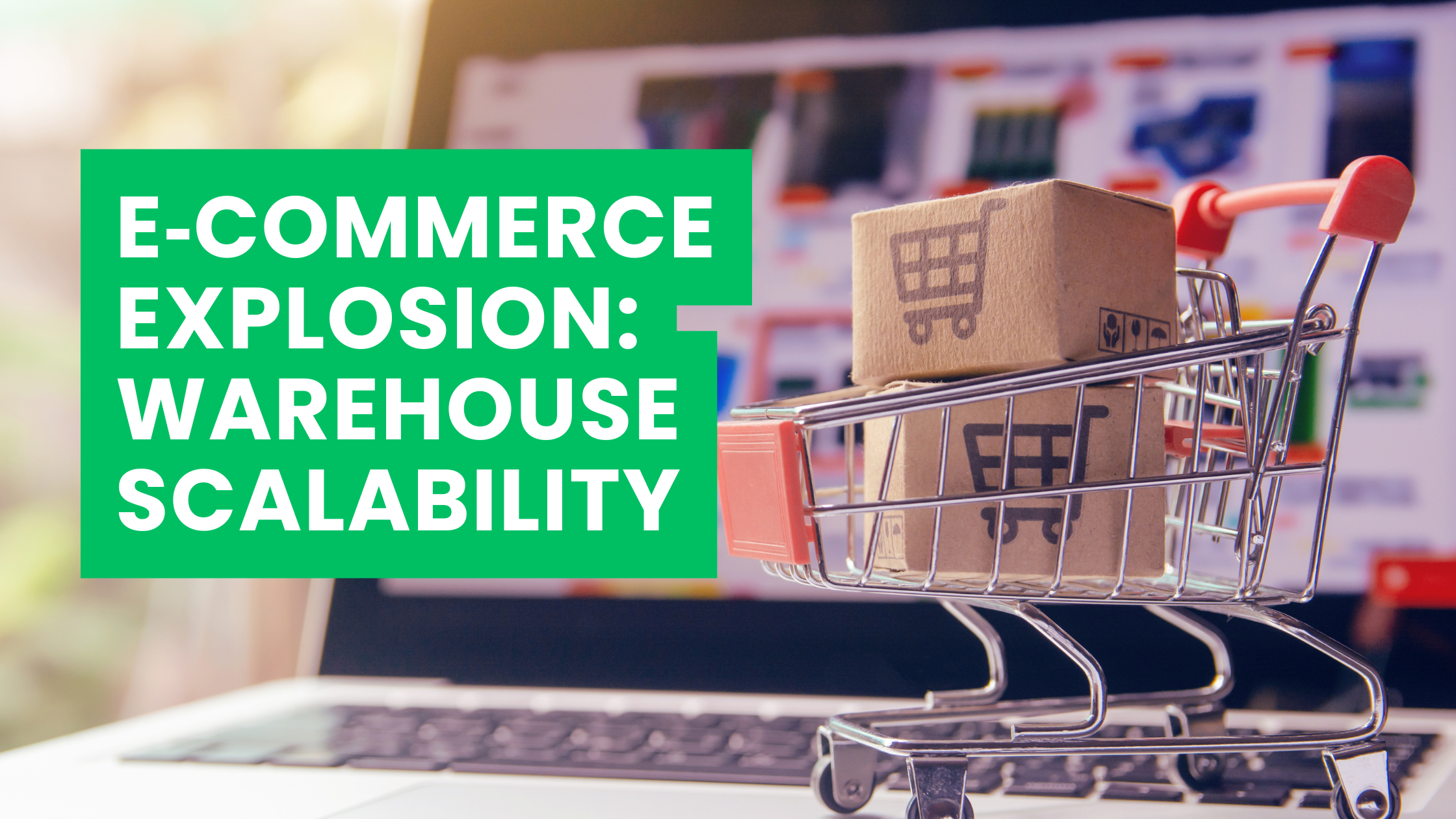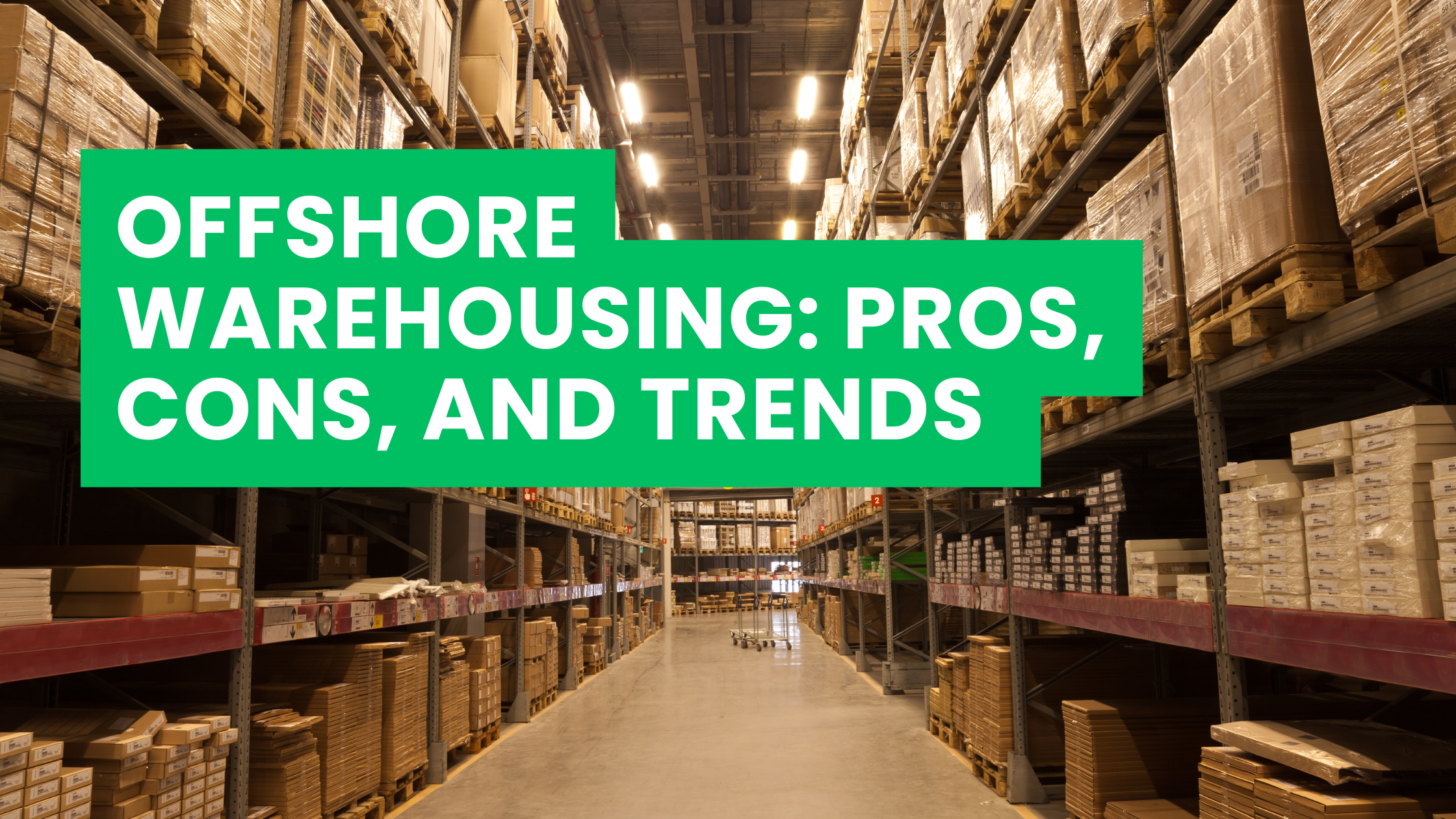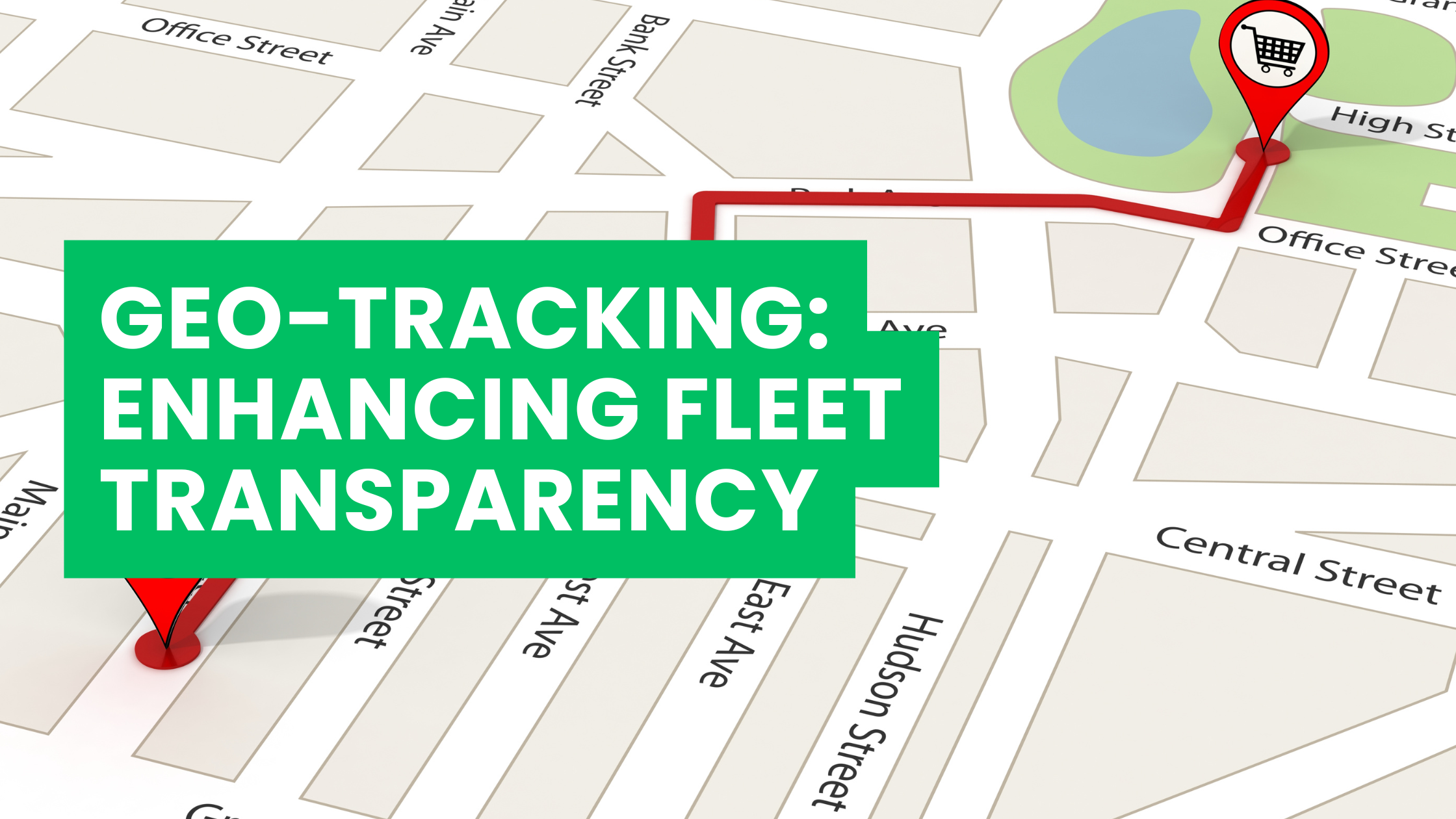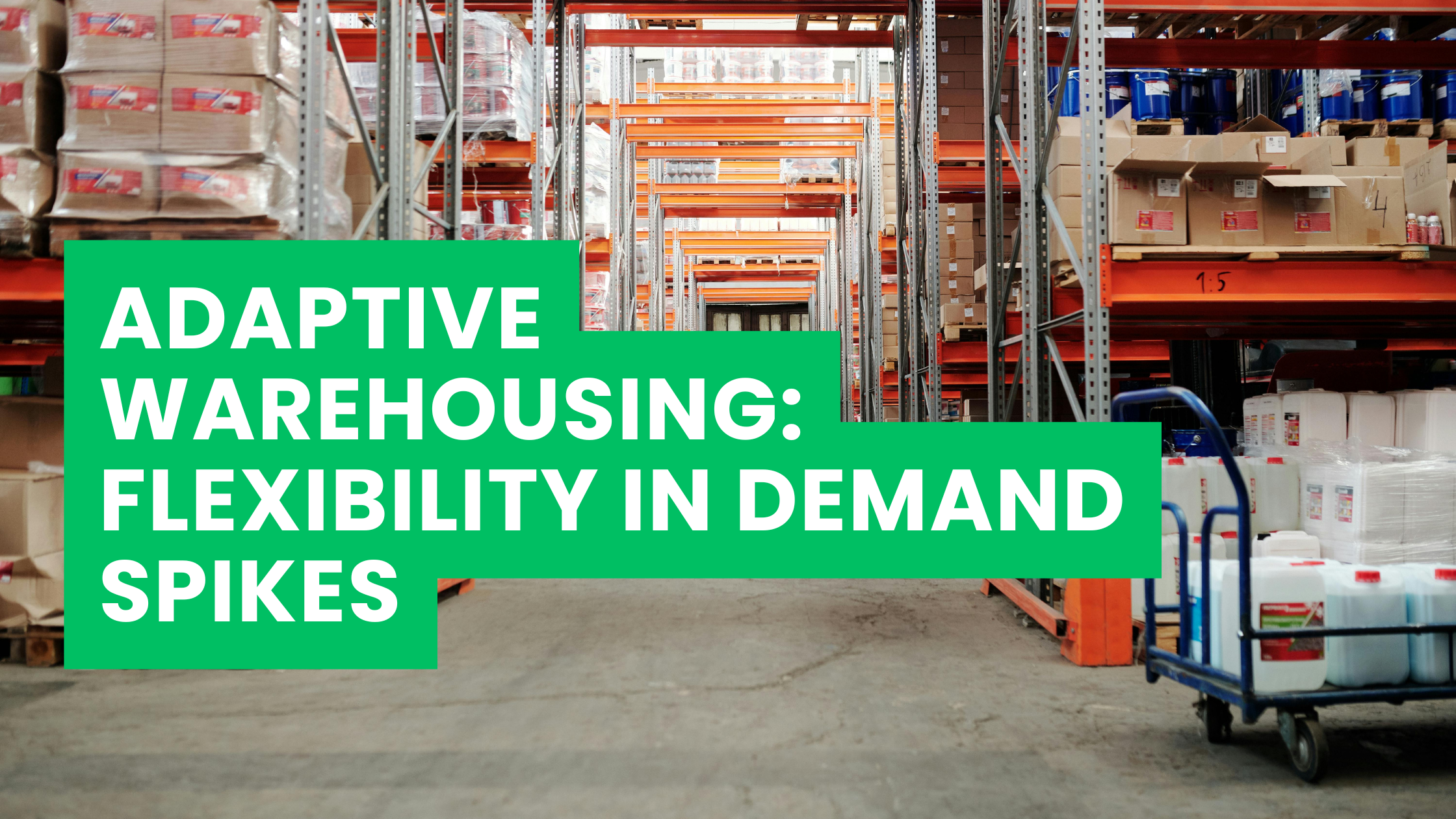Introduction: Why Scalability Defines Modern E-Commerce Logistics
The last decade has seen e-commerce transform from a niche channel into the backbone of global retail. Fueled by mobile shopping, digital payments, and consumer demand for instant delivery, online sales have exploded. Global e-commerce sales surpassed $6 trillion in 2024 and are projected to keep rising sharply through 2030.
This rapid growth creates tremendous opportunities but also immense pressure on the backbone of fulfillment: warehousing and distribution centers. Traditional warehouse models—built for predictable volumes—struggle to adapt to spikes in demand, seasonal surges, and the “instant gratification” culture shaped by same-day and next-day delivery expectations.
For businesses, the key challenge is warehouse scalability: the ability to expand, optimize, and contract operations quickly while maintaining efficiency and controlling costs. This blog explores how companies can scale warehousing to match the e-commerce explosion, the role of technology, and how ASL International empowers global clients to transform scalability into a competitive advantage.
The New Reality of E-Commerce Logistics
Rising Consumer Expectations
- Faster deliveries – Same-day and even two-hour delivery windows are becoming standard.
- Higher accuracy – Customers expect error-free orders with real-time tracking.
- Personalization – Tailored experiences require greater SKU variety and smaller, customized orders.
Market Pressures
- Seasonality: Black Friday, Ramadan, Singles’ Day, and holiday seasons can spike volumes by 10x overnight.
- Globalization: Cross-border e-commerce is expanding, demanding compliance, customs efficiency, and local distribution capacity.
- Omnichannel models: Retailers must synchronize online, offline, and hybrid fulfillment, further stressing warehouse operations.
Without scalable warehouse systems, companies face missed deadlines, soaring costs, and unhappy customers.
What Does Warehouse Scalability Mean?
Scalability in warehousing is more than just “adding space.” It combines infrastructure, processes, and technology to flex capacity, labor, and throughput in line with fluctuating e-commerce demand.
Core Elements of Scalability:
- Physical capacity – Ability to expand or contract storage space.
- Labor scalability – Rapid workforce ramp-up using automation and flexible staffing.
- Technology scalability – Cloud-based Warehouse Management Systems (WMS) that grow with operations.
- Process scalability – Standardized workflows that can be replicated globally.
- Cost scalability – Ability to increase output without exponential cost hikes.
Challenges in Scaling Warehousing for E-Commerce
1. Space Shortages
Urban warehouses near key demand centers face rising rents and limited availability.
2. Labor Shortages
Warehouses worldwide suffer from high turnover and skill gaps. E-commerce surges amplify this challenge.
3. Technology Gaps
Legacy WMS and manual processes cannot keep pace with real-time, omnichannel fulfillment needs.
4. Inventory Complexity
Growing SKU diversity increases picking complexity and requires smarter slotting strategies.
5. Cost Management
Scaling too fast leads to underutilized assets; scaling too slow leads to service failures. Balancing both is a constant struggle.
Strategies for Scalable Warehousing
1. Flexible Infrastructure Models
- Multi-client warehousing: Shared facilities lower costs while providing surge capacity.
- Pop-up warehouses: Temporary facilities in peak seasons for rapid expansion.
- Micro-fulfillment centers: Small, automated hubs placed close to urban areas for ultra-fast delivery.
2. Automation and Robotics
- Automated storage and retrieval systems (AS/RS): Boost throughput without expanding floor space.
- Robotic picking and packing: Reduces reliance on manual labor.
- Conveyor and sortation systems: Accelerate high-volume order processing.
3. Smart Warehouse Management Systems
- Cloud-based WMS provides real-time inventory visibility across multiple sites.
- AI-driven demand forecasting optimizes stocking and avoids over/under capacity.
- API integrations connect e-commerce platforms (Shopify, Magento, Amazon) seamlessly.
4. Workforce Flexibility
- Seasonal labor pools and on-demand staffing.
- Training programs to upskill staff in handling automation.
- Human-machine collaboration where robotics handle repetition and humans handle exceptions.
5. Data-Driven Optimization
- IoT sensors monitor warehouse performance.
- Predictive analytics improve layout, reduce travel time, and cut costs.
- Digital twins simulate warehouse operations to test scalability scenarios.
Case Study: Peak Season Scalability
Imagine a global fashion retailer preparing for Singles’ Day in China, the world’s biggest online shopping event. Without scalable warehousing:
- Orders pile up.
- Delivery deadlines slip.
- Customer experience deteriorates.
By adopting scalable strategies:
- Pop-up distribution hubs are activated three months in advance.
- Robotics handle 70% of repetitive picking.
- AI-forecasting ensures accurate inventory allocation.
- Result: On-time delivery rate of 98% and a 20% reduction in cost per order compared to the previous year.
Role of ASL International in Enabling Scalability
ASL International specializes in end-to-end logistics and warehousing solutions that empower businesses to meet e-commerce growth head-on.
Our Scalable Solutions
- Global Warehouse Network: Facilities across Asia, Middle East, Africa, and Europe with flexible contracts.
- Tech-Enabled Operations: Smart WMS platforms integrated with client systems for real-time visibility.
- Surge Handling Expertise: Decades of experience in managing seasonal spikes for IT, telecom, and retail sectors.
- Value-Added Services: Kitting, returns handling, compliance, and packaging customization.
- IOR/EOR Capabilities: Seamless global trade compliance and customs clearance for cross-border e-commerce.
By partnering with ASL International, businesses gain a logistics partner that not only scales infrastructure but also absorbs complexity, reduces risks, and accelerates growth.
The Future of Scalable Warehousing
1. Robotics as a Service (RaaS)
On-demand robotic fleets that can be scaled without heavy capital investment.
2. AI-Powered Forecasting
Hyper-accurate demand prediction will minimize costly overcapacity or stockouts.
3. Green Scalability
Sustainable energy solutions, recyclable packaging, and carbon-neutral operations will be integral to scalable warehousing.
4. Global Expansion
Emerging markets like Africa, Southeast Asia, and Latin America will demand scalable warehousing to support skyrocketing e-commerce penetration.
Actionable Takeaways
- Adopt flexibility – Build warehouses that can expand or contract easily.
- Invest in automation – Robotics and smart WMS are no longer optional.
- Leverage partnerships – Providers like ASL International can provide global scalability at reduced risk.
- Think beyond space – Scalability is about workforce, technology, and compliance as much as physical square footage.
- Plan for the future – Sustainability and AI will define warehouse scalability in the next decade.
Conclusion
The e-commerce explosion is not slowing down—it is accelerating. Businesses that fail to scale warehousing risk losing relevance in a hyper-competitive market. Those that embrace scalable infrastructure, automation, and strategic partnerships will thrive.
ASL International stands ready to help companies transform warehousing into a growth engine. By combining global reach, local expertise, and cutting-edge technology, we make warehouse scalability not just a response to e-commerce growth—but a driver of long-term competitive advantage.
FAQs
Q1: Why is warehouse scalability critical for e-commerce?
Scalability ensures businesses can handle sudden surges in demand, seasonal peaks, and long-term growth without sacrificing efficiency or customer experience.
Q2: What role does automation play in warehouse scalability?
Automation reduces dependency on manual labor, boosts accuracy, and speeds up order fulfillment, making it easier to scale operations rapidly.
Q3: How can small businesses achieve warehouse scalability?
They can partner with 3PLs like ASL International, use shared warehouse models, and adopt cloud-based WMS to scale without massive capital investments.
Q4: What is the future of scalable warehousing?
Expect increased robotics adoption, AI-powered forecasting, micro-fulfillment centers, and sustainable energy solutions.
Q5: How does ASL International support warehouse scalability?
ASL offers a global warehouse network, advanced WMS, surge handling, value-added services, and full trade compliance support through IOR/EOR services.









